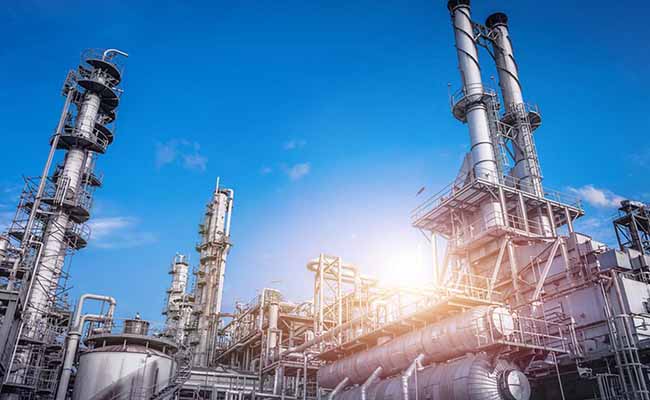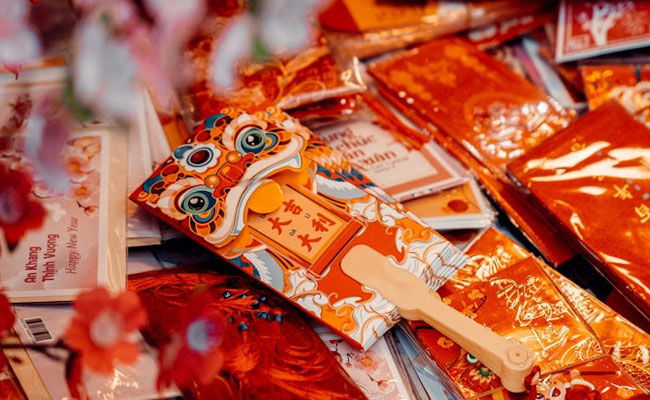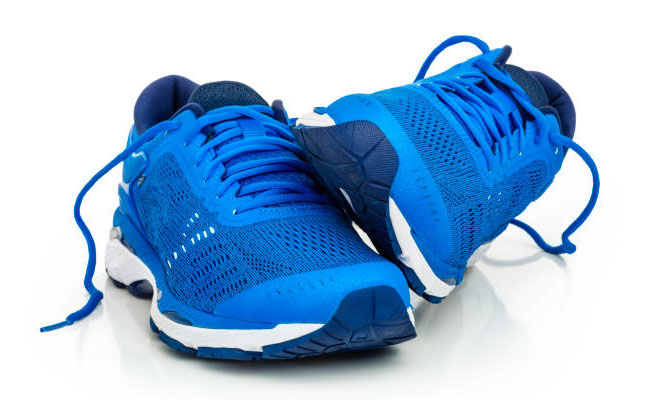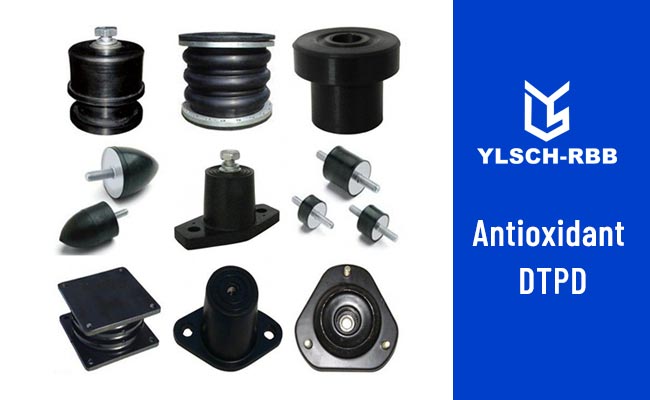
YLSCH Notice of 2020 Chinese New Year Holiday
2020-02-14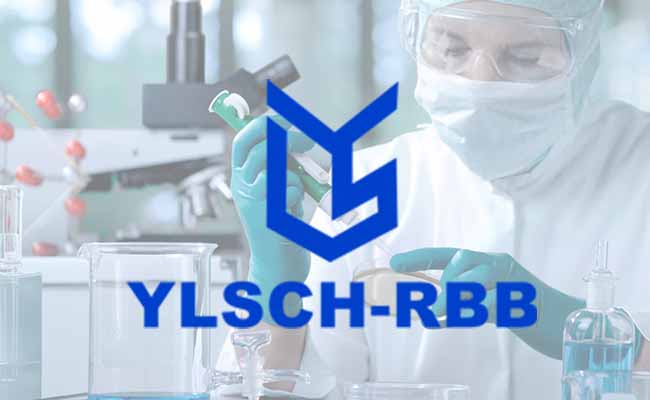
We Are YLSCH
2020-02-14Rubber additives play an important role in the formulation of synthetic rubber, and are the main factors affecting the performance of rubber products. Introduce the application of several types of rubber additives in synthetic rubber:
- Auxiliaries of the curing system
The vulcanization system auxiliary is mainly composed of a vulcanizing agent, an accelerator and an active agent, and its amount accounts for about 10% of the raw rubber amount. Depending on the saturation of synthetic rubber, various vulcanization systems such as sulfur, metal oxides, peroxides, and amine compounds can be used.
1.1 Vulcanizing agent
Different vulcanization systems such as sulfur, peroxides, quinone oximes, resins, and metal oxides can be used according to the performance requirements of rubber types and rubber products. Among them, the sulfur vulcanization system is divided into ordinary vulcanization system, effective vulcanization system,and semi-effective vulcanization system.
Sulfur vulcanization system is used more in general synthetic rubber and semi-general synthetic rubber. Metal oxide vulcanization system is mainly used in neoprene (CR), quinone oxime and resin vulcanization system is mainly used in butyl rubber (IIR), peroxide. Chemical and resin vulcanization systems are mainly used in ethylene-propylene rubber (EPR), natural rubber (NR), and styrene-butadiene rubber (SBR). Special rubber [such as polysulfide rubber (LP), chlorosulfonated polyethylene rubber (CSM), chlorinated polyethylene rubber (CM), fluorine rubber (FKM), silicone rubber (MVQ), fluorine silicon rubber (FVMQ), etc.] Basically they are saturated rubbers and do not contain double bonds. Sulfur does not crosslink them, so non-sulfur vulcanization systems such as metal oxides, peroxides, and organic amine salt vulcanization systems are required. In recent years, acrylic rubber (ACM) has basically adopted the sulfur vulcanization system.
(1) Sulfur. Common powder sulfur is the most commonly used vulcanizing agent in the rubber industry. With the development of radial tires and colored rubber products, insoluble sulfur (IS), which does not bloom, does not affect adhesive properties and product appearance, is widely used. IS is mostly used in NR tire compounds, which has the effect of improving the rubber-skeleton material adhesion performance, avoiding blooming, and prolonging the rubber storage time. IS is also used in a small amount in butadiene rubber (BR) tire compounds.
(2) Peroxide [2]. In addition to IIR and halogenated butyl rubber (XIIR), the remaining rubbers are in particular MVQ, EPDM, nitrile rubber (NBR), hydrogenated nitrile rubber (HNBR), CM, CR and thermoplastic elastomers Almost all can be cured with peroxide. The cross-linking bond of peroxide vulcanizate is C—C bond, and its bond energy is larger than that of single sulfur, double sulfur and polysulfide bond of sulfur vulcanizate, so the heat resistance of peroxide vulcanizate is Excellent oxygen aging performance, small compression set, difficult to bloom, no vulcanization reversion phenomenon, but its tensile properties, strain properties and fatigue resistance are poor.
(3) Resin. In order to improve the heat resistance and aging resistance of rubber compounds, many rubber types (IIR, NR, SBR, NBR, etc.) have widely used resins (such as alkylphenol resins, etc.) as crosslinking agents. Resin vulcanized IIR compounds have good heat resistance and small compression set, and have become the most important compounds for the manufacture of vulcanized capsules. As a curing agent for IIR, the resin has a slow curing speed and a high curing temperature. Phenolic resin vulcanization systems are also commonly used in the preparation of rubber-plastic blends such as EPDM / PP.
(4) Metal oxide. CR, CM and XIIR rubbers containing halogens or carboxyl groups need to use metal oxides as vulcanizing agents. Common metal oxides are zinc oxide and magnesium oxide, with active zinc oxide and light magnesium oxide being the best.
(5) Sulfur donor. The sulfur donor is a vulcanizing agent capable of decomposing sulfur during the rubber vulcanization process. The characteristics of its rubber compound are better heat resistance than sulfur compound, meanwhile it has excellent compression deformation resistance, good scorch resistance, and is not easy to bloom. However, because of the toxicity of most sulfur donors, they are included in the restricted use, such as morpholine-containing vulcanizing agents DTDM and TMTD.
(6) Amine compounds. FKM and ACM often use amine compounds as vulcanizing agents, mainly methylene amines and aniline compounds.
- The accelerator
Accelerators include thiazoles, sulfenamides, thiurams, guanidines, and disulfide carbamates. With the continuous deepening and improvement of environmental protection awareness, various accelerators have become the object of restricted use due to their toxicity and pollution.
The substitute varieties of sulfenamide accelerators are mainly accelerators TBBS (NS), TBSI, CBBS and CBS (CZ), etc .; the substitute varieties of thiuram accelerators are mainly accelerators TBzTD, etc .; dithiocarbamates Substitute varieties of class accelerators are mainly ZBEC (DBZ), etc .; The substitute varieties of accelerators DTDM and OTOS are mainly Duralink HTS and Perkalink-900.
At present, the commonly used types of accelerators in China are accelerators CBS and TBBS, and the amount of both accounts for more than 36% of the total amount of accelerators in China. More than 70% of the total dosage.
Accelerator TBzTD has a long scorch time and good processing safety, and can replace the accelerators such as TMTD and TETD. Accelerator TBSI has the characteristics of extending the scorch time and slowing down the vulcanization speed in the rubber compound, which can obviously improve the anti-vulcanization reversion performance of NR. Accelerator ZBEC can be used as the main or auxiliary accelerator for NR, SBR, EPDM, natural latex and synthetic latex, and has good scorch resistance. The diphenylguanidine accelerator DPG (D) is mainly used as an accelerator for natural rubber and synthetic rubber. Adding the accelerator DPG to the compound filled with high white carbon black can significantly reduce the Mooney viscosity of the compound rubber. Increase vulcanization speed.
- The active agent
The active agent is a vulcanization system auxiliary agent which improves the activity of the accelerator and accelerates the vulcanization reaction, so it is also called an accelerating auxiliary agent or a vulcanization promoting active agent. Active agents are mostly composed of metal oxides and fatty acids. The most typical is the combination of indirect zinc oxide (3 to 5 parts) and stearic acid (1 to 2 parts). Excessive release of zinc oxide during the production, use and recycling of rubber products may adversely affect the environment and human health, especially aquatic plants and plants that are sensitive to zinc. At present, vigorously develop low-zinc or zinc-free vulcanizing active agents (such as organic zinc, zinc oxide compound masterbatch, calcium oxide and magnesium oxide, etc.) to partially replace zinc oxide. Studies have shown that both organic zinc and zinc oxide with core-shell structure can act as vulcanization activators, but the anti-vulcanization reversion performance and physical properties of the compounds are not as good as indirect zinc oxide compounds.
(1). Protective system additives
The rubber compound is prone to aging during use. It is necessary to add a protection system to delay aging and avoid rapid performance degradation. Physical antioxidants are generally light shielding agents or waxes. Chemical antioxidants include amines, phenols, esters and other compounds. A small amount of antioxidant is added to the synthetic rubber during the synthesis process, and a larger amount of antioxidant is added to the post-processing process.
(2). Antioxidant for synthetic rubber
The antioxidant added to the synthetic rubber during the synthesis process should be selected according to the synthesis process and product color. Soluble polymer rubber needs to choose an antioxidant that is easily soluble in the solvent used for rubber synthesis, while emulsion polymer rubber needs to choose an antioxidant that can form a stable emulsion with the emulsifier used in rubber synthesis. In addition, choose pollution type or non-pollution according to the color of the product Type of antioxidant. Polybutadiene rubber (BR), styrene thermoplastic elastomer, isoprene rubber (IR) and other solvent-soluble rubber used to use the antioxidant BHT (264), and sometimes combined with phosphite antioxidant TNP (TNPP). Antioxidant TNP is easily hydrolyzed, and its use is prohibited because the nonylphenol produced affects the reproductive health of the organism. Antioxidant BHT has a relatively small molecular weight and is easy to volatilize. Foreign studies believe that more of its volatiles are harmful to the environment. Therefore, other phenolic antioxidants are currently used for replacement. The more common antioxidants are 1076 and 1520. Or use auxiliary antioxidants to produce a synergistic effect. Light-colored latex rubbers are mostly styrene-based phenolic antioxidants, and dark-colored rubbers are mostly contaminated amine-based antioxidants. Synthetic rubber antioxidants are developing in the direction of environmental protection, large relative molecular weight, compounding and multifunctionality. The DSC method can be used to detect the oxidation-inducing period or oxidation-inducing temperature of raw rubber, and the performance of antioxidants can also be examined by the heat-resistant oxygen aging performance. Light-colored rubber products also need to examine the heat and oxygen aging resistance and yellowing resistance.
- Antioxidants
(1). Physical antioxidant
Synthetic rubber compounds often use paraffin as a physical antioxidant that is resistant to ozone and weathering. When the rubber is vulcanized, the paraffin dissolved in the rubber gradually migrates to the rubber surface after cooling, forming a dense and flexible wax film, thereby isolating ozone in the air and playing a protective role. Compared with ordinary protective wax, the modified protective wax has a variety of functional groups (such as carboxyl, hydroxyl, etc.) in its molecular structure. The protective ability of modified protective wax is 1.5 ~ 3 times higher than that of ordinary protective wax. The use of modified protective wax can reduce the amount of anti-ozone agent.
(2). Chemical antioxidant
The antioxidants used in the processing of synthetic rubber are mainly amine and quinoline antioxidants. Common varieties are antioxidants 4020, 4010NA and RD. The amount of these three antioxidants accounts for more than 80% of the current national defense antioxidants.
There are many naphthylamine antioxidants, such as phenyl-α-naphthylamine (antioxidant A) and 1-phenyl-β-naphthylamine (antioxidant D). However, due to its toxicity and carcinogenicity, countries began to significantly reduce their production from the 1970s until they are currently banned.
China’s antioxidant RD has become one of the main antioxidants for radial tire compounds. The active ingredient in the product is the di-, tri-, and tetra-mers of 2,2,4-trimethyl-1,2-dihydroquinoline. In particular, the dimer has excellent anti-aging properties, so the dimer content should be increased as much as possible. Antioxidant RD has excellent heat and oxygen aging resistance, and has a strong inhibitory effect on copper and other metal ions. However, its ozone and flex resistance are poor. ) And so on. Anti-aging agent AW can prevent the cracking of rubber products caused by ozone. It is especially suitable for rubber products used under dynamic conditions. Used in combination with anti-aging agents H, D and 4010, it can enhance its effectiveness.
P-phenylenediamine antioxidants are divided into dialkyl-p-phenylenediamines, diaryl-p-phenylenediamines and alkylaryl-p-phenylenediamines based on the groups attached to p-phenylenediamine. The main varieties of dialkyl-p-phenylenediamine antioxidants include antioxidants 4030 and 288. Antioxidant 4030 is easy to disperse, has a relatively high solubility in rubber, and has no blooming problem when used in large amounts. It has the effect of accelerating vulcanization and shortening the scorch time of the compound rubber. Anti-aging agents 4010NA and 4020 with excellent aging performance are especially suitable for outdoor rubber products such as wires and cables, hoses, and tapes under long-term static conditions. The main varieties of alkylaryl p-phenylenediamine antioxidants are antioxidants 4010, 4010NA, 4020 and H. Anti-aging agent 4020 is currently the largest amount of antioxidants used in tire rubber compounds. It has excellent protection against ozone aging and flex crack aging. It also has good protection against thermal oxygen aging and weather aging. Chemical action, suitable for NR, BR, SBR, NBR and CR. Used in combination with paraffin (especially mixed wax with branched chain or microcrystalline wax), it can enhance the static protection effect. Compared with anti-aging agent 4010NA, anti-aging agent 4020 has better resistance to water extraction and can achieve long-term protection.
The main varieties of diaryl p-phenylenediamine antioxidants include antioxidants 3100 and H. Anti-aging agent 3100 is characterized by non-spraying, no irritation to the skin, good protection against ozone, oxygen and flex fatigue aging of tires and other rubber products, and is especially suitable for heavy-duty truck tires and off-road tire rubbers. It is also a special anti-ozone agent for CR. Antioxidant 3100 has one or two compatibilizing genes introduced into the benzene ring on both sides of the molecular structure, so its solubility in rubber increases, the amount in rubber can be increased, and the application of antioxidants 4010NA and The defect that the 4020 rubber turns red, has good protection against harmful metals such as copper and manganese; the disadvantage is that the rubber becomes dark brown under light and the pollution is serious, so it is only suitable for dark products.
In recent years, the development and application of new varieties of rubber antioxidants has been less. With the increasingly strict environmental protection requirements, the antioxidants have gradually developed towards high performance and environmental protection. The varieties of rubber antioxidants have gradually concentrated, and the varieties with the largest amount of use in the future Still antioxidants RD and 4020.
- Processing aids
Rubber processing aids only play a physical role in the rubber compound without causing a chemical reaction.
(1). Tackifier
Tackifiers are processing aids used to increase the self-adhesion of rubber. The self-adhesiveness of the rubber will affect the roll wrapping performance of the rubber compound, which will affect the dispersion of the compounding agent, the strength of the rubber compound, the continuity of the extrusion process and the foaming property. Proper viscosity also helps to improve the stiffness of the compound.
The tackifiers commonly used in China are mainly octyl phenol resin (203 resin), tert-butyl phenol resin (204 resin) and p-tert-butyl phenol acetylene resin (Koresin resin). Modified tert-butyl phenolic resin (HY-2006 resin) is a modified product based on 204 resin, which has better adhesive properties and resistance to moisture and heat aging, and can replace Koresin resin. Saturated rubber tackifying resin HY-209 is a tackifier specially developed for EPDM.
(2). Plasticizer
Plasticizers are processing aids that can improve the processing properties of polymers and their flexibility or tensile properties. According to its mechanism of action, it can be divided into two major categories: physical plasticizers and chemical plasticizers. Physical plasticizers are conventionally called softeners, and chemical plasticizers are called plastizing agents. Synthetic rubber is mainly used as a physical plasticizer. After the mass production of radial tires, Plasticizer A has been widely used in China. It can evenly dissolve in rubber, make the filler mix quickly, shorten the compounding time of the rubber, and have obvious plasticizing effect.
Petroleum-based process oil is another physical plasticizer commonly used in rubber processing. High aromatic oils are banned by the European Union because of the carcinogenic risk of polycyclic aromatic hydrocarbons.
(3). Leveling agent
The main function of the homogenizer is to solve the problem of blending polymers of different polarities and viscosities. Leveling agents are mostly used in inner liners and vulcanized capsules. With the improvement of the structure of radial tires, the amount of brominated butyl rubber (BIIR) will increase, which adds many difficulties to rubber processing, such as vulcanizates and The unvulcanized adhesive has a small adhesive force, and air trapping occurs during the rolling process. Currently used in airtight adhesives are mainly imported homogenizers TNB88, UB4000 and 40MSF. Replacing the operating oil with the homogenizer 40MS (F) in whole or in part can improve the processing safety performance, flex resistance, adhesion performance and heat aging resistance of the rubber compound. The use of a leveling agent in the tread rubber can play a lubricating effect, reduce the Mooney viscosity of the rubber compound, and improve the wear resistance of the finished tire; increase the extrusion speed of the rubber compound, reduce the extrusion temperature, and reduce the edge and pores of the extruded tread. Reduce processing costs.
(4). Dispersant
The main function of the dispersant is to improve the dispersion of carbon black and other compounding agents in the rubber compound. Dispersants generally function as internal lubricants during rubber compounding, which can reduce internal friction between rubber macromolecular chains, reduce the viscosity of compounded rubber, promote the dispersion of carbon black and other compounding agents, and improve the uniformity and processing of rubber compounds. Performance, reduce mixing time and energy consumption, and accelerate the dispersion of fillers. With the continuous development of the tire industry, the amount of synthetic rubber has gradually increased and the amount of carbon black has increased. These factors have brought inconvenience to rubber processing, so the application of dispersants has become inevitable. Substances with a dispersing effect include fatty acid, metal fatty acid salts, fatty acid esters, condensation products of fatty acids and high molecular fatty acid esters, and mixtures thereof with metal soaps.
6. Conclusion
With the development of the rubber industry, the amount of synthetic rubber is increasing year by year. In recent years, China’s rubber additives have made great progress in development and application, but there are still many shortcomings. Rubber auxiliaries must develop in the direction of environmental protection, high efficiency, multi-function, and low cost. Rubber auxiliaries manufacturers should strengthen their application research in synthetic rubber to keep pace with the rapid development of the rubber industry.

